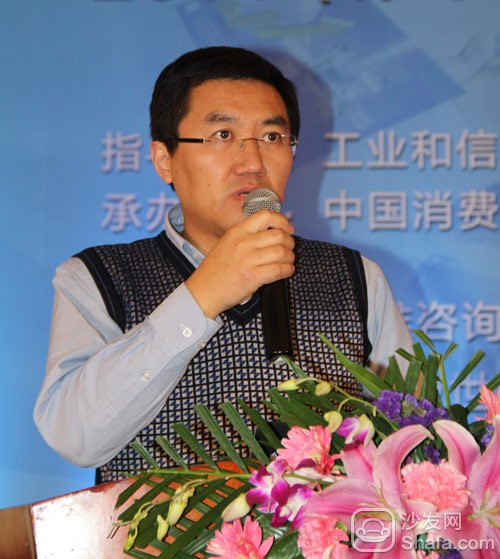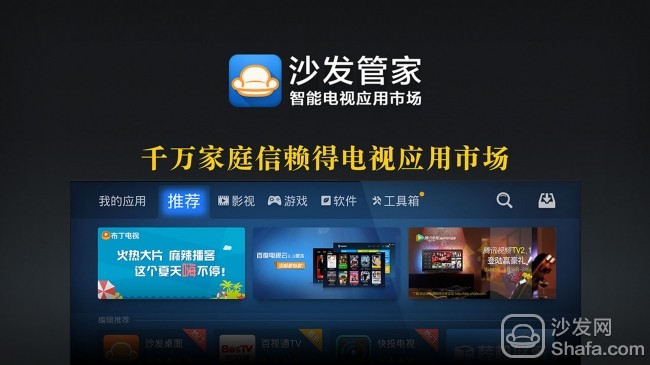On December 5, 2014, the 2014 (10th) China Audio & Video Industry Technology and Application Trend Forum ("AVF Forum") was held in Beijing Jingyi Hotel. This forum closely follows the development trend of the industry, with the theme of “new new leap in new normal modeâ€, based on the forefront, starting from hot spots such as 4K ultra-high definition, smart, big data, and smart home, focusing on the core of domestic and global audio and video industry. Technology, product, application and emerging market areas; in-depth summary and analysis of the audio and video industry and the development of digital television, and the grand recognition of innovative products, technologies and applications, in order to promote the audio and video industry chain construction, and then promote the Chinese sound The all-round development of the video industry achieves mutual benefit and win-win through collaboration.

Mr. Qu Xiaojie, Deputy Director of the Audiovisual Division of the Electronic Division of the Ministry of Industry and Information Technology, gave a keynote speech entitled “The Development and Trend of Smart TVsâ€. The following is the full text of the speech:
Qu Xiaojie: Good morning everyone! I'm glad to share this with my thoughts on industrial development. As we all know, the demand for smart TV market is getting higher and higher, and the future must be combined with the Internet. This is a development trend. We believe that the final development of the color TV industry will be dominated by smart TVs. In the future, color TVs cannot be single-monitored. We must consider the combination of applications and services.
At present, we have a few shortcomings, the first is the core chip, the second Android-based system.
Smart TVs must have rich applications to attract consumers' attention and use, and they need cloud computing and big data. On the display side, we see that 4K TV has been recognized by consumers. The biggest problem with 4K is that there are few program sources, and there are also such problems in the early promotion of HDTV. 3D is now basically a standard, there is also a laser display, laser projection is also a future trend.
The existing problems, first of all, require domestic companies to strengthen chip R&D, and now information security is the focus of attention of all countries in the world. We must increase investment in chip R&D. The second is the operating system. Operating systems We hope to have autonomous and controllable systems. The other is the standard system.
Smart TV is an important carrier of information consumption. In the past two years, we have strongly supported its development.
In the future development trend, 4K is an important trend in the future. The next step in TV evolution is to show progress, such as 4K, 8K, OLED, and projection. The projection may have an impact on TV in the future. The earliest was broadcasting, wireless, and later digitized. The next step should be to develop in the direction of a smart family.
From the perspective of the industry chain, the next step is that radio and television may consider 4K, which is the future trend. The other is decoding. The current content is to perform a conversion. From our perspective, we hope that the industry will have a development plan and create an orderly development environment.
We have promoted independent standards promotion for audio and video. In the past few years, we have established a national standard. Based on the evolution of AVS on the basis of broadcasting and television, satellites, including terrestrial, including cable, began to be encoded with AVS+ in 2013. Also DRA, DRA and AVS are the standards we support and testing is also available. This is from the video and audio standards.
The other is the joint promotion, including the attention of everyone on the ground to prepare a ground network and support enterprises to promote overseas.
Focus on telling everyone about smart homes. From our perspective, digital homes in the past few years, including our digital home branch, the concept of digital home has been raised for more than 10 years. In fact, the consumer market response in the market has not reached everyone’s imagination. In a good state, the most important thing I personally feel is that early digital households were the digitization of home appliances, but now with the development of cloud computing, big data, and broadband Internet technologies, three technological breakthroughs in particular have gradually evolved into smart households. Product interconnection does not find consumer demand Application market direction is not good. For my example, we do TV support for multi-screen interaction. Multi-screen interactive questions are for everyone in the audience who is coming home. How many people use multi-screen interaction? If we do a product research and development, we only have this function, but consumers have not recognized it. Everyone said that multi-screen interaction, mobile phones pushed to the TV, the problem is that several consumers will use this feature. Industrial development, including future service integration.
We analyze that in fact, smart families must combine smart cities and smart communities. The ultimate goal is to be people-oriented and to serve people. Here we analyze the first base, Internet of things technology, intelligent interaction, cloud computing, big data is the most basic. The most important must be to find applications that meet consumer needs.
A few major categories, a health care, health care, and urban public health care services are not medical concepts. If the medical concept is used, the accuracy of products is very strict.
The second is home-based care for the elderly. Our country needs to gradually enter an aging society. There is also a problem. China is the only one that pushes family planning. There is only one child. Children and the elderly do not live together. Home-based care is potential demand.
There is also an interactive education, children's education, and adult education. Everyone learns new knowledge.
Another smart home, smart home is just to provide a digital, information-based services. This point of smart home is currently doing more fire, is just a product concept, smart home does not do some work around value-added services. There is some entertainment.
In order to promote digital home development, we have promoted several base constructions in China, such as Hangzhou in Zhejiang Province and Fuzhou in Fujian Province, Wuhan in Hubei Province, Mianyang in Sichuan Province, and Qingdao in Shandong Province. These areas are relatively developed in the audio and video industry. This is where some exploration has been done and some applications have been made. We hope to promote the country through base construction.
Health care is currently hotter from a medical point of view, and consumers need it. As people's living standards increase, the focus on health will gradually increase. In fact, there are many sudden deaths in the workplace, and there are many hidden dangers in health. However, providing value-added services for health care can avoid some problems.
Home care for the elderly, affection and interaction, China's society and Europe and the United States are not the same, the Chinese people long for family affection than other peoples. We also have problems with our smart home industry. The underlying core technology is not enough, and our own standard marketing is not particularly good. There is also a lack of leading companies, and a lack of new products and new services. This can't be called consumer awareness because sometimes we don't meet the potential needs of consumers and do not dig out. There are also many smart homes that are cross-border applications that require the collaboration of ministries and commissions.
In the next step, we will focus on encouraging technological innovation and supporting leading enterprises to drive the development of the industry.
thank you all!
Recommended installation sofa butler Download: http://app.shafa.com/
